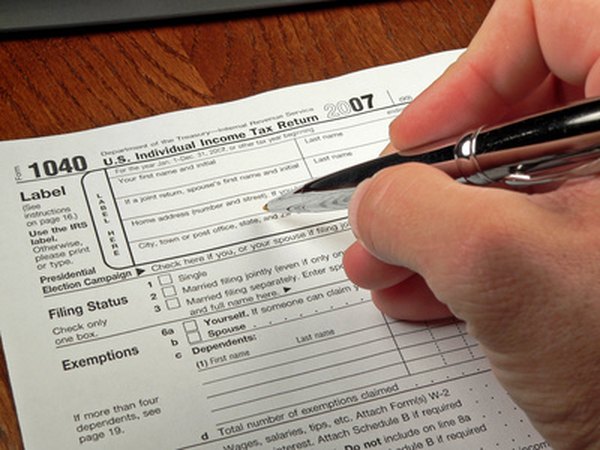60 Day Withdrawal From an IRA
Tax-free rollovers must be reported on your return.
tax forms image by Chad McDermott from Fotolia.com
The Internal Revenue Service prohibits you from taking a loan from your individual retirement arrangement or even using it for collateral for a loan. However, if you have a short-term cash need that you know will be satisfied within 60 days, you might be able to use a short-term withdrawal from your IRA without penalty.
60-Day Withdrawal Rollover
The IRS allows you to roll over money from your IRA to any qualified retirement plan, including the same IRA from which you took the distribution, within 60 days of the distribution. For example, if you take a distribution from your IRA, you can put it back within 60 days, and the IRS treats it as a permissible rollover, so you don't owe any extra taxes or penalties.
Rollover Frequency Limitations
The IRS places limits on how often you can roll over money from a particular IRA. Once an IRA has been involved in a rollover, you can't initiate a rollover from that IRA for 12 months. For example, say you have three different IRAs. If you roll money from the first to the second, you can't take a 60-day withdrawal from either the first or the second IRA for 12 months. However, you could take a 60-day withdrawal from your third IRA.
Reporting Distribution on Tax Return
Even if your rollover doesn't result in taxable income, you must still report it on your income tax return. The amount of the distribution you received from your IRA is listed in Box 1 of IRS Form 1099-R (Distributions from Pensions, Annuities, Retirement or Profit-Sharing Plans, IRAs, Insurance Contracts, etc.). You should receive this form from your plan administrator.
Enter the total distribution on Line 4a of IRS 1040 (U.S. Individual Income Tax Return). If you rolled over the entire amount of your distribution, write "Rollover" next to Line 4b. Enter any taxable amount that you did not rollover within 60 days on Line 4b.
Taxes Withheld on Distributions
When you take a distribution from your IRA, money will be withheld from the distribution in order to cover the related federal income taxes unless you opt out. By itself, withholding isn't a problem because you will receive the excess withheld as a tax refund when you file your return at the end of the year. However, you're still responsible for making sure that the withheld amount gets redeposited within 60 days.
For example, imagine you take a $15,000 IRA withdrawal and $3,000 is withheld for taxes, meaning you receive only $12,000. If you redeposit only $12,000, that extra $3,000 counts as an IRA distribution, subject to income taxes and early withdrawal penalties.
References
- Internal Revenue Service: Form 1040 Instructions
- Internal Revenue Service: Topic 557 - Tax on Early Distributions from Traditional and ROTH IRAs
- IRS: Publication 590-B: Distributions from Individual Retirement Arrangements (IRAs)
- IRS: Publication 590-A: Contributions to Individual Retirement Arrangements (IRAs)
Writer Bio
Based in the Kansas City area, Mike specializes in personal finance and business topics. He has been writing since 2009 and has been published by "Quicken," "TurboTax," and "The Motley Fool."

